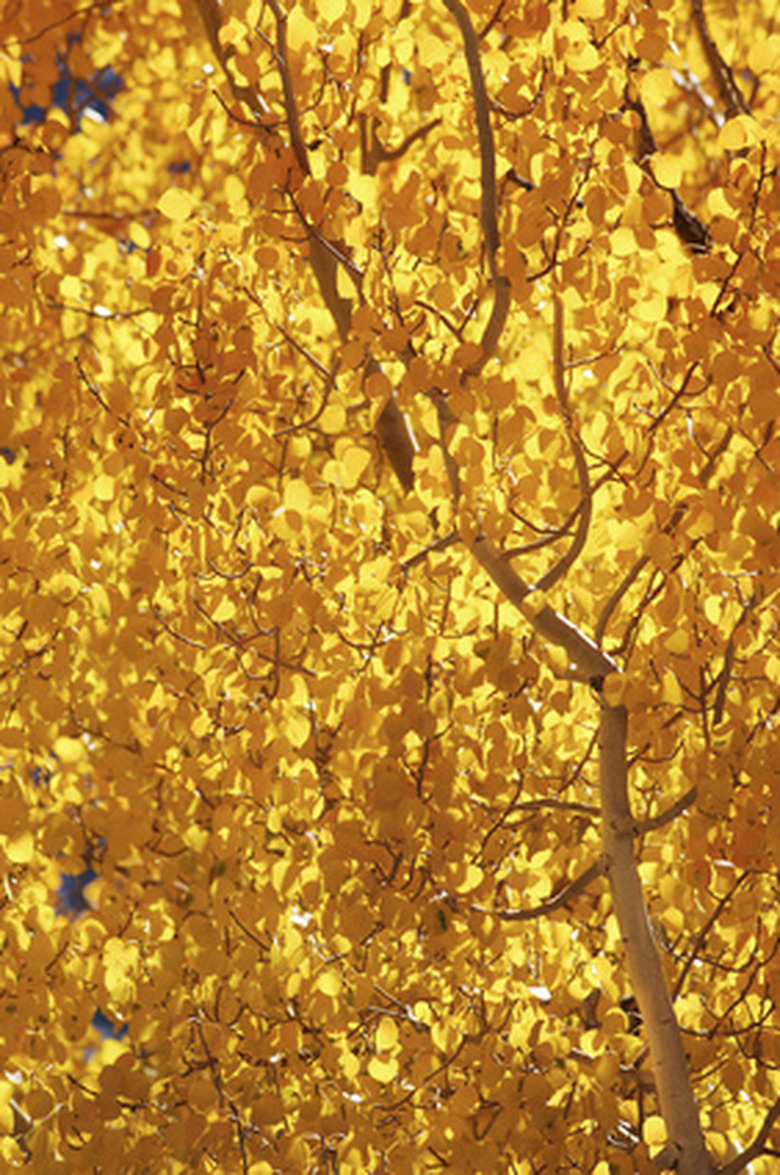Quaking Aspen Tree Bug Control
A variety of sucking bugs feed on quaking aspen trees' plant sap and can lead to the eventual demise of the tree. Fortunately, control methods are available to prevent tree death. To take the fear and guesswork out of dealing with bug infestations of your aspen, familiarize yourself with what to look for and what to do if pests become a problem in your home garden.
Care
Quaking aspens (Populus tremuloides) are much more likely to experience and have trouble coping with a bug infestation when stressed compared to more resilient, vigorous trees. Care for your quaking aspen with growth in locations that provide full sunlight. This tree is not tolerant of shaded conditions. Ideal soil type is moist and well-drained with pH of 5.5 to 8.0, according to North Dakota State University Agriculture.
- A variety of sucking bugs feed on quaking aspen trees' plant sap and can lead to the eventual demise of the tree.
Types
One type of quaking aspen tree bug problem is the oystershell scale. Oystershell scales overwinter as eggs and then adhere themselves to plant surfaces during the spring, according to the Colorado State University Extension. Another type of insect pest is the clear winged aspen aphid (Chairophorus populifoliae) that appears during the end of the summer after overwintering, as well. Aphids attack the foliage of the quaking aspen, according to the Colorado State University Cooperative Extension.
Effects
Oystershell scales, recognized by their small bodies that resemble oyster shells, as their name suggests, often remain on tree branches for up to three years, according to the Colorado State University Extension. Scales are "sucking" bugs that remove sap from plant tissue. Quaking aspens experience branch dieback and tree death in extreme cases. Though aphids usually only result in cosmetic damage to quaking aspens, these small bugs display clear wings and can be found on leaf surfaces where they also suck the sap from leaves. As aphids suck tissue fluid, they produce a sugary substance called honeydew which attracts a fungal germination of sooty mold, according to the Colorado State University Cooperative Extension. Sooty mold is an infection that leads to the presence of a blackish mold on leaves, further damaging your aspen.
- One type of quaking aspen tree bug problem is the oystershell scale.
- As aphids suck tissue fluid, they produce a sugary substance called honeydew which attracts a fungal germination of sooty mold, according to the Colorado State University Cooperative Extension.
Natural Control
For natural control of quaking aspen tree bugs, remove oystershell scales with a plastic scrub brush, taking care not to damage bark or other plant surfaces, advises the Colorado State University Extension. For aphids, use a strong stream of water to knock them from the tree. Additionally, control for both bug problems includes the removal and destruction of affected plant parts to manage the insects and to avoid the invasion of fungi that attack weakened plants.
Chemical Control
For chemical control of oystershell scales, chemical insecticides include those with the active ingredient acephate, carbaryl or bifenthrin. For both scales and aphids, consider use of oils like horticultural oil or dormant oil. Since oils kill on contact and can control overwintering eggs, apply these during the dormant season, generally from February to March, to your quaking aspen to prevent the emergence of bugs and to kill any adults. Oils are gentler and less toxic to humans and beneficial insects, so they provide effective control without creating more harm, according to the Colorado State University Cooperative Extension.
- For natural control of quaking aspen tree bugs, remove oystershell scales with a plastic scrub brush, taking care not to damage bark or other plant surfaces, advises the Colorado State University Extension.
